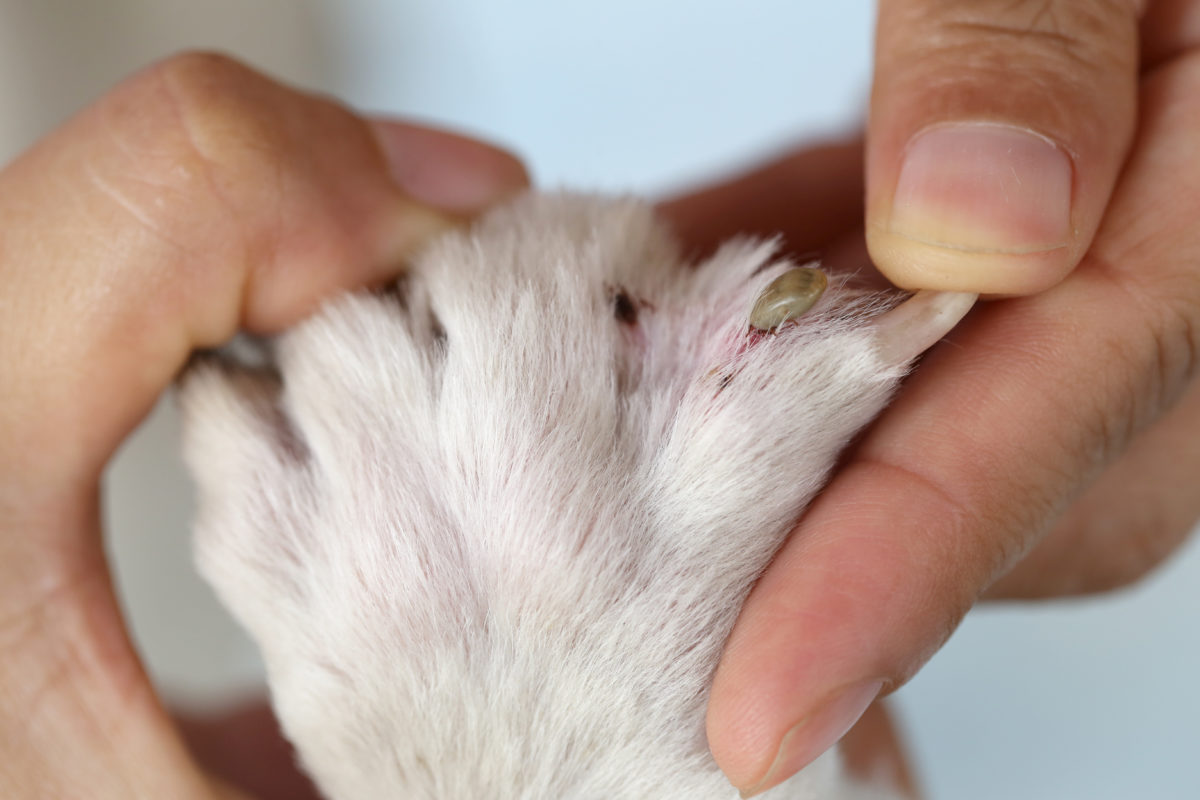Why do I need to perform a tick check on my pet?
Ticks carry infectious diseases and some, like the paralysis tick, can cause direct toxic harm to your pet so this is one topic where prevention is better than treatment. Unfortunately, no tick preventative medication is guaranteed, so if you’re living or travelling in a tick-prone area then you need to physically check your pet for ticks at least once a day and carefully remove any as soon as possible. The sooner that any attached tick is removed then the less effect it will have on your pet.
When it comes to a tick prevention program for your dog, it’s all about the three step approach:
- An oral or spot on tick preventative medication (like Nexgard or Bravecto)
- A tick repellent product (like the Seresto collar or Advantix spot on)
- A daily tick check (twice a day if you’re in a high risk area)
How to perform a tick check:
Ticks are easier to feel than see amongst your pet’s fur, so use your finger tips to feel everywhere along your dog’s skin from the tip of their nose to the tip of their tail. This is called the ‘Finger Walking’ technique. Be systematic and follow the same pattern each time so that you don’t miss any spots. It’ll be awkward at first, but you and your dog will get used to it with practice. You can add a few treats, toys or enrichment distractions (like peanut butter or kibble in a Kong ball) to make it easier for you and a more pleasant experience for your dog. You’re feeling for something that feels like a warty lump that is between 1 and 5mm in size, so they can be tricky to find amongst the fur. Even though ticks have favourite places that they like to hide in, they can be found on any part of your dog’s skin.
The step-by-step tick check:
Start at your dog’s nose, walking your finger tips all over their face. The places where ticks like to hide on the face are under lip folds, so feel in the folds and lift their lips up for a peek, then around and under their ear flaps and around the ear cartilage knobbly bits.
Next, feel under the chin, down the neck and run your fingers across the shoulders. Being sure to run your finger tips all around under their collar, if they are wearing one.
Feel up under their arm pits then down their front legs. The main hiding places for ticks here are between the toes and pads so creep your finger tips into all those little nooks.
Most dogs love a belly rub, so giving a lovely slow massage all over their tummy and back should be the easiest part, carefully checking any skin folds closely and up around their groin area.
The back legs have the same hiding places as the front legs, so feel all the way down the legs and be thorough in the gaps between those toes and pads.
Keep going, you’re nearly there! A lot of dogs are sensitive around their bottom and tail, so a few extra treats or distractions may be needed here. Even if your dog won’t allow you to feel around this area (I don’t want you to get bitten if your dog really doesn’t like it), ticks may be visible if you lift their tail, checking directly under the tail as well as around their bottom and any skin folds. Then walk your fingers all the way to the tip of their tail and you’re done.
Great work!
What do I do if I find a tick on my dog?
Do not squeeze the tick – if it is a paralysis tick then squeezing the body can force more toxin into your dog.
Ticks can bury their mouth parts quite deeply into the skin when they attach, so you need to be sure that you’ve removed the entire tick with it’s mouth parts. Using a tick removal device makes this easier, there are a few different products available so follow the instructions on the label. It is possible to use tweezers but be sure to grab the head, not the body, of the tick to gently twist it out.
If you’re not able or confident in removing the tick, call your local veterinarian for help.
If your pet becomes unwell after you’ve recently removed a tick from them, call your veterinarian immediately as both paralysis tick toxicosis and tick-borne diseases can be deadly. Early treatment leads to better outcomes.
Want to be prepared? The Vet in a Van – Navigator Pet First Aid Kit makes removing ticks easy!
Protect your dog now:
Check out our other blog articles for more information about ticks or Ehrlichiosis then head to www.obay.com.au and enter the unique code VIAV100R at the top left of the screen for an exclusive discount on tick prevention and other pet supplies.
Would you like to be walked through this Tick Check with Dr Tania?
Grab your dog and click here if you’d like to watch a video version of Dr Tania performing this tick check on our YouTube channel.
*Information provided here is based on information available to us at the time of publishing and not intended as an individual veterinary recommendation for any product or action. You should consult your veterinarian for advice regarding your individual pet and read all product labels and instructions prior to the use of any product.
**By using our discount code, you save money and Vet in a Van receives a small margin on each sale which helps us to keep helping you and your pets.







